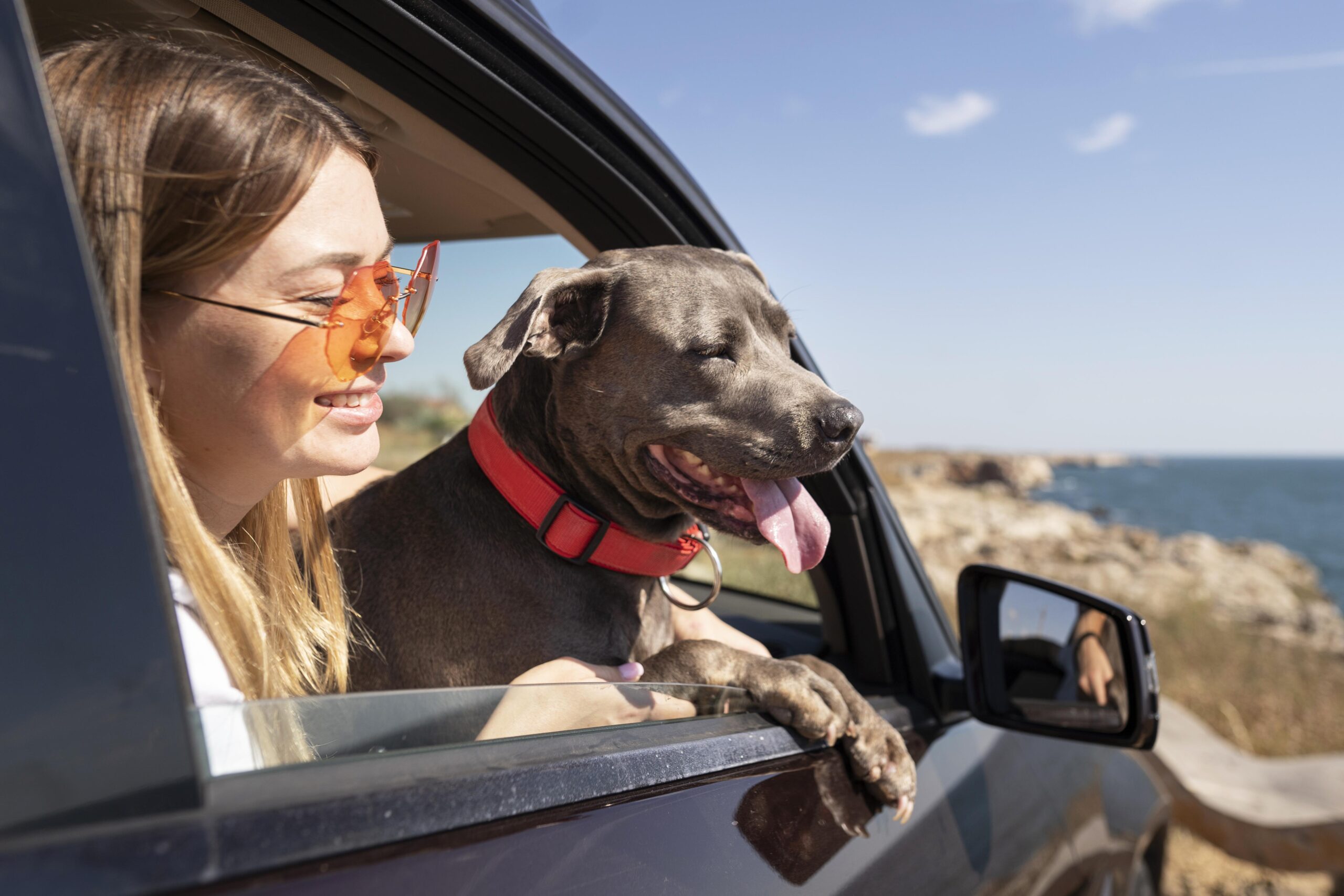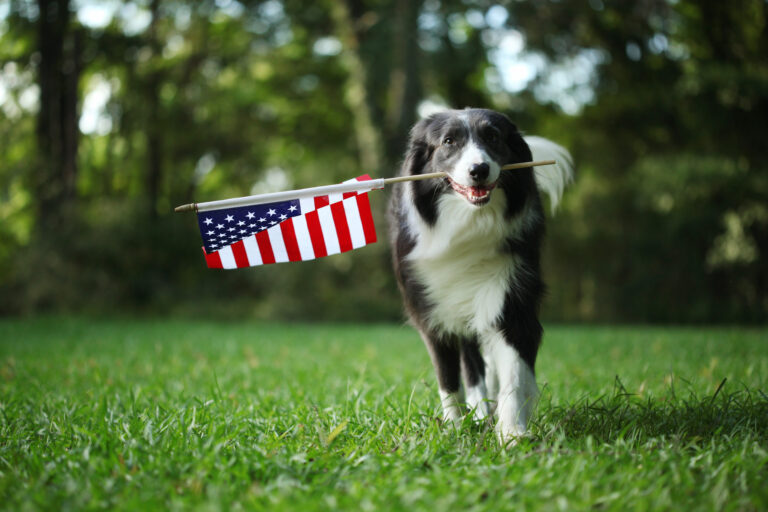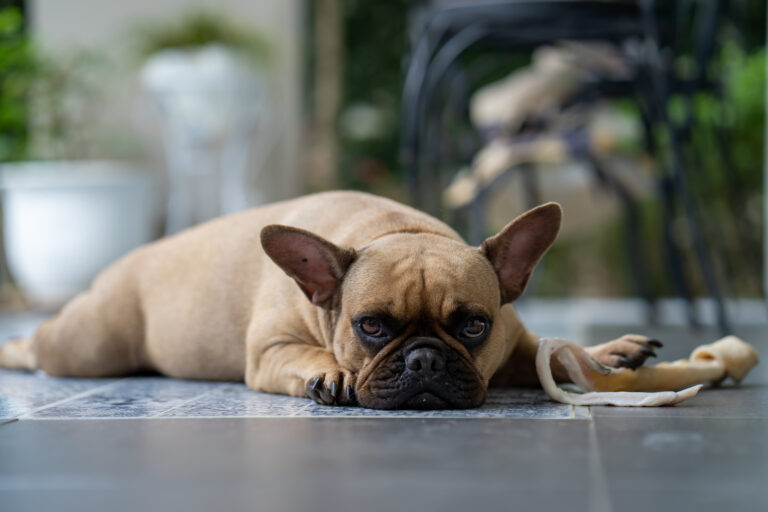Tips For Stress-Free Travel: Training Your Dog For Car Rides
Traveling with your dog can be a joyful experience, but if your pup dreads car rides, it can quickly become stressful. Training your dog for car rides is essential to ensure that both you and your furry companion can enjoy every adventure together. In this guide, we’ll share valuable tips to help make car travel a positive experience for your dog.
Historically, dogs weren’t accustomed to modern transportation modes, making car rides potentially frightening. Introducing your pet gradually to the vehicle environment can mitigate anxiety. According to studies, short, positive experiences can significantly reduce dogs’ travel stress over time.
- Start with desensitization by letting your dog explore the car while stationary.
- Gradually expose your dog to the engine’s sound and vibrations without moving.
- Begin short trips around the block, rewarding calm behavior.
- Slowly increase the ride duration while maintaining a positive environment with treats and praise.
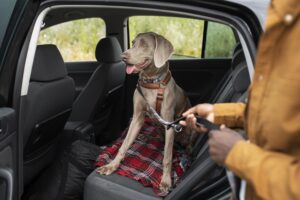
How to Train Your Dog to Enjoy Car Rides
Understanding why your dog fears car rides is the first step. Dogs may associate the car with negative experiences, such as a trip to the vet. It’s essential to create positive associations with car rides. Start by letting your dog explore the car while it’s parked. Bring treats and their favorite toys to make it enjoyable.
Gradually desensitize your dog to the car environment. Begin by turning the engine on and off without moving the vehicle. This helps your dog get used to the sound. Repeat this over several days. Once your dog is comfortable, start short, stationary sessions with the engine running.
Next, take your dog on very short trips, maybe just around the block. Make these first rides short and sweet. Reward your dog with treats and praise during and after the ride. Over time, slowly increase the ride’s duration, always ending on a positive note.
Using crate training can also help. A crate can provide a sense of security for your dog. Place the crate in the back seat and secure it to prevent sliding. Line the crate with familiar bedding. This helps create a calm and familiar environment for your dog during travel.
Step 1: Understanding Your Dog’s Fear
Dogs can develop a fear of car rides for several reasons. Some dislike the motion or the noise. Others might associate the car with negative experiences, such as trips to the vet. This fear often manifests as trembling, drooling, or whining. Recognizing these signs is crucial for addressing the issue.
Identifying the root cause of your dog’s fear can help you tailor your approach. If it’s the sound of the engine, try turning it on and off while your dog is nearby. Gradually expose your dog to the noise without initiating a ride. This will help your dog acclimatize to the engine’s sound. Patience is key during this phase.
For dogs who get anxious due to car motion, start with very short rides. Aim for a block or two initially. Observe how your dog reacts during these brief trips. If they remain calm, gradually extend the duration. This gradual introduction can reduce anxiety.
Consider using calming aids to ease your dog’s fears. Options include natural supplements or anxiety vests. These can help create a more relaxed state for your dog. Always consult your vet before using any calming products.
Step 2: Gradual Desensitization to Car Environment
Gradual desensitization is crucial for helping your dog feel comfortable in the car environment. Start with brief, non-moving sessions where your dog can explore the car freely. Let them sniff around and get used to the confined space. Use treats and positive reinforcement during these initial sessions. This builds a positive association with the car.
Once your dog seems at ease, start the engine without moving the vehicle. This helps them get used to the sound and vibration. Repeat this step for a few days. Gradually increase the time the engine is running while your dog is in the car. Monitor their behavior to ensure they remain calm.
After your dog becomes comfortable with the engine running, take very short trips. Drive just around the block at first. Reward your dog with praise and treats during and after the ride. Gradually extend the distance and duration of the trips based on your dog’s comfort level.
Consider incorporating familiar and calming elements into the car. Bring their favorite blanket or toy to make the environment feel more like home. Adding these familiar items can ease anxiety and make the car a more inviting space. This method encourages a smooth transition to enjoying car rides.
Step 3: Making the Car Positive and Familiar
One of the key elements in training your dog to enjoy car rides is making the car a positive and familiar place. Begin by playing with your dog near the car, incorporating their favorite toys. This creates an enjoyable association with the vehicle. Positive reinforcement using treats can further enhance this experience. Reward your dog each time they show interest in the car.
Consider feeding your dog near or even inside the car. This act alone can help create positive associations. Use their favorite food to make it an enjoyable time. Over time, extend these feeding sessions inside the car. Gradually, your dog will start seeing the car as a pleasant environment.
Place familiar items such as your dog’s bed or blanket in the car. These familiar scents can provide comfort. It helps reduce stress by making the new environment feel more like home. Incorporate their toys and even items of clothing that carry your scent. This mix creates a comforting atmosphere.
In addition to familiar items, use calming aids if necessary. Products such as calming sprays or pheromone diffusers can help manage anxiety. Always consult your vet before using any new products. These aids can be particularly helpful during longer trips or the initial desensitization phase.
Engage in activities that your dog enjoys, using the car as a hub. This can include short trips to the park or to a favorite location. The goal is to have positive outcomes from car rides. When the destination is an enjoyable place, the journey becomes something to look forward to.
Monitor your dog’s reactions and adjust your approach as needed. Each dog is unique, and what works for one may not work for another. The key is patience and consistency. A gradual and positive approach will help your dog begin to enjoy car rides.
Step 4: Gradual Introduction to Short Rides
Once your dog feels comfortable in a stationary car, it’s time to introduce short rides. Start with a quick drive around the block. Keep these sessions short and sweet to avoid overwhelming your dog. Praise and treats during and after the ride help reinforce positive behavior. Repeat this process daily if possible.
Gradually increase the distance of these rides. Maybe drive to a nearby park or a friend’s house. Each time, observe your dog’s behavior closely. If they seem calm, gradually extend the journey. Make sure to reward your dog with plenty of praise and treats for staying calm.
If your dog shows signs of stress, scale back the distance and try shorter rides again. It’s important not to push too quickly. The goal is to build a positive association. Consistency and patience will go a long way in achieving this.
Consider varying the destinations to keep things interesting. Instead of always driving to the park, try different locations. This can include pet-friendly stores or the homes of friends who can give extra attention. The variety makes car rides more exciting for your dog.
Consistency is key to success in this step. Stick to a routine that your dog can expect and feel secure in. Over time, these short trips will build your dog’s confidence. Eventually, longer journeys will become easier and stress-free for both of you.
Using a crate can add a layer of comfort and safety during these rides. A crate provides a secure and familiar space. Remember to secure it properly to avoid sliding. This can help make the entire experience smoother and more enjoyable.
Step 5: Increasing Ride Distance Over Time
After your dog is comfortable with short rides, it’s time to gradually increase the distance. Start by adding a few extra minutes to each trip. Observe your dog’s behavior closely during these longer rides. Ensure they remain calm and relaxed. Continue using treats and praise to reinforce positive experiences.
Introduce new, slightly longer destinations, such as a different park or a pet store. Change the route occasionally to keep things interesting. This can prevent your dog from becoming anxious about a specific path. Varying the destination helps in making car rides more exciting. Remember to keep the atmosphere inside the car stress-free.
If at any point your dog shows signs of distress, revert to shorter rides. This step is all about monitoring and adjusting based on your dog’s comfort levels. Never rush the process. Patience ensures that your dog doesn’t develop new anxieties. The gradual approach helps solidify their confidence.
Consider using calming aids like pheromone sprays or relaxing music during longer trips. These can help ease any lingering anxiety. Always provide plenty of breaks on longer drives. Let your dog stretch, drink water, and relieve themselves. These breaks make the journey more manageable and enjoyable for your dog.
Keep a consistent routine for these increased rides. Consistency helps your dog know what to expect. Over time, this regularity can lead to longer, stress-free journeys. Each positive ride builds towards a more confident and happy traveler.
Tips for Stress-Free Travel with Your Dog
Traveling with your dog can be a joyful experience if managed well. Prepare by packing all the essentials your dog might need. This includes food, water, and their favorite toys. Don’t forget a cozy blanket to make them feel at home. A little preparation can go a long way in ensuring a smooth journey.
Always secure your dog safely during travel. Use a pet seatbelt or a secured crate to keep them safe. Free-roaming dogs in cars can be dangerous for both the pet and the driver. Safety measures minimize distractions, making the ride safer for everyone involved. They also provide comfort zones for your pet.
- Avoid feeding right before travel to prevent motion sickness.
- Make frequent stops on long trips for bathroom breaks and stretching.
- Keep the car well-ventilated but avoid letting the pet stick their head out of the window.
- Bring disinfectant wipes and waste bags to clean up any accidents quickly.
Consider using calming aids if your dog tends to get anxious during travel. Natural supplements or anxiety vests can help soothe nerves. Consult your vet about options like pheromone sprays or mild sedatives if needed. These can make longer journeys more manageable for anxious pets.
Create positive associations with the car by rewarding calm behavior with treats and praises during and after rides. Establish consistent routines that your dog can anticipate and feel secure in. Engaging activities and scents they enjoy can transform apprehension into excitement over time. Consistency helps build their confidence, making future travels stress-free.
The Importance of Rest Stops on Long Journeys
Rest stops are a crucial part of any long journey with your dog. They provide necessary breaks for your dog to stretch, relieve themselves, and get some fresh air. Regular stops can help prevent discomfort and anxiety. A well-timed rest stop can make the entire journey more pleasant for your pet. Aim for a rest stop every two to three hours.
Plan your rest stops in advance. Identify pet-friendly areas where your dog can safely walk around. Parks, rest areas, and pet-friendly gas stations can be great choices. Carry a portable water bowl and offer sips of water during these breaks. These small actions help keep your dog hydrated and comfortable.
- Look for grassy areas for bathroom breaks.
- Ensure the area is safe and free from hazards.
- Allow your dog to stretch and walk around.
- Keep a leash on your dog to prevent them from running off.
Using rest stops effectively means balancing relaxation with safety. Always keep your dog on a leash, even in designated pet areas. This helps prevent unexpected incidents. Keep interaction with other pets minimal to avoid unnecessary stress or altercations. Consistent use of leashes helps set a standard for behavior.
Engage your dog in some light exercise during rest stops. A short walk or some playtime can work wonders in reducing pent-up energy. This helps to calm them down. Later in the car, they are more likely to rest or sleep. Exercise contributes to a smoother and quieter trip afterward.
Bringing along familiar items like toys or a blanket can make rest breaks more enjoyable. These items provide comfort and make unfamiliar places feel more secure. It also reinforces positive associations with travel. With thoughtful planning and consistent breaks, long journeys can be stress-free for your dog.
How to Manage Dog Car Sickness
Car sickness in dogs is a common issue and can make travel unpleasant for them and their owners. Recognizing the symptoms is the first step in addressing the problem. Signs include drooling, whining, pacing, and vomiting. Understanding these signs can help you take timely action. Early intervention can prevent the situation from worsening.
One effective way to manage car sickness is through conditioning. Gradually get your dog used to car rides with short trips. Slowly increase the duration as they become more comfortable. Make each ride a positive experience by offering treats and praise. This helps your dog associate the car with good things.
- Avoid feeding right before travel to minimize nausea.
- Maintain a cool temperature in the car to reduce discomfort.
- Keep the windows slightly open for fresh air.
- Consider using a car harness or crate for added security.
Natural remedies can also help manage car sickness. Ginger is known for its anti-nausea properties and can be given in small, safe doses. Always consult your vet before introducing new remedies. Other options include over-the-counter treatments designed for dogs. Your vet can recommend the best options for your pet.
Sometimes, despite your best efforts, car sickness may persist. In such cases, talk to your vet about medical solutions. Prescription medications can help manage severe symptoms. These should be used as a last resort. Always follow your vet’s guidance for the best results.
Consistency is vital in managing your dog’s car sickness. Stick to short, pleasant rides and gradually build up to longer trips. Use calming aids, like anxiety vests or pheromone sprays, to reduce stress. Over time, your dog should become more comfortable with car travel, making journeys enjoyable for both of you.
Travel Essentials for a Comfortable Ride for Your Dog
Ensuring your dog’s comfort during travel starts with packing the right essentials. A secure crate or harness is one of the most important items. Safety should be the top priority. Crates provide a safe, confined space. A harness can prevent injuries if you opt to let your dog sit on the seat.
Bring along your dog’s favorite blanket or bed. Familiar scents can offer comfort and reduce anxiety. This also makes the car feel more like home. A cozy bed allows your dog to rest during the journey. It’s an easy way to make a big difference in their comfort level.
- Food and water bowls
- Collapsible water bottle
- Treats and chew toys
- Waste bags
- First-aid kit
- Portable fan
Consider packing a small first-aid kit designed for pets. Accidents can happen, and it’s better to be prepared. Include items like bandages, antiseptic wipes, and tweezers. This kit can be invaluable during longer trips. Consult your vet for suggestions on what to include.
Frequent breaks are essential on long trips, so plan for rest stops. Carry a portable water bowl to keep your dog hydrated. Make sure you have enough food and treats to last the entire journey. Stopping every two to three hours helps your dog stretch and relieve themselves.
Maintaining a comfortable temperature in the car is crucial. A portable fan can help circulate air, especially during hot weather. Ensure that the car is well-ventilated. Avoid letting your dog stick their head out the window. This can be dangerous and should be discouraged for safety reasons.
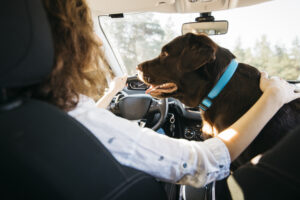
Frequently Asked Questions
Traveling with dogs can be challenging, but understanding and addressing their needs can make the experience enjoyable. Here are some frequently asked questions to help ensure smooth and stress-free car journeys for your pet.
1. How do I know if my dog has car anxiety?
Signs of car anxiety in dogs include excessive drooling, trembling, whining, or vomiting. These symptoms indicate stress and discomfort during rides. Observing your dog’s behavior closely will help you identify these signs early.
If you notice any of these symptoms, it’s crucial to take action before long trips. Gradual desensitization and positive reinforcements can help reduce your dog’s anxiety over time.
2. What should I bring for my dog on a long drive?
Bring essentials like food, water, a favorite blanket or bed, toys, and a leash. These items will keep your dog comfortable and occupied during the journey. Packing familiar items helps reduce stress by creating a homely environment inside the car.
A portable water bowl is crucial for hydration during breaks. Including treats and waste bags can also make the trip smoother for both you and your pet.
3. Can I give my dog medication for travel sickness?
Yes, but always consult your vet before giving any medication to your dog. They can recommend safe options based on your pet’s health condition. Common prescriptions include anti-nausea medications that can ease travel discomfort significantly.
You may also consider natural remedies like ginger but discuss them with your vet first. Proper medical guidance ensures effective relief without adverse effects.
4. How often should I make rest stops during long trips?
Aim to stop every two to three hours to let your dog stretch and relieve themselves. Frequent breaks prevent stiffness and provide mental stimulation through brief walks or playtime.
Makes sure each stop includes hydration opportunities using a portable water bowl. Consistent stops ensure that travel remains comfortable for both you and your pet throughout the journey.
5. Are there any calming aids I can use while traveling?
Yes, products like pheromone sprays or calming vests can help soothe anxious dogs during travel. These aids create a sense of safety and relaxation in unfamiliar environments such as cars.
Additionally, playing soft music or using essential oils designed for pets might enhance their calming effect further reducing anxiety levels during longer drives.
Conclusion
Training your dog to enjoy car rides requires patience, understanding, and consistency. By gradually desensitizing your dog to the car environment and making the experience positive, you can significantly reduce stress. Incorporating familiar items and taking regular rest stops further enhance your dog’s comfort.
With the right approach and tools, traveling with your dog can become a pleasant experience for both of you. Preparing thoughtfully and addressing any issues early on will ensure smooth and stress-free journeys. Ultimately, these efforts will strengthen the bond with your furry companion.

